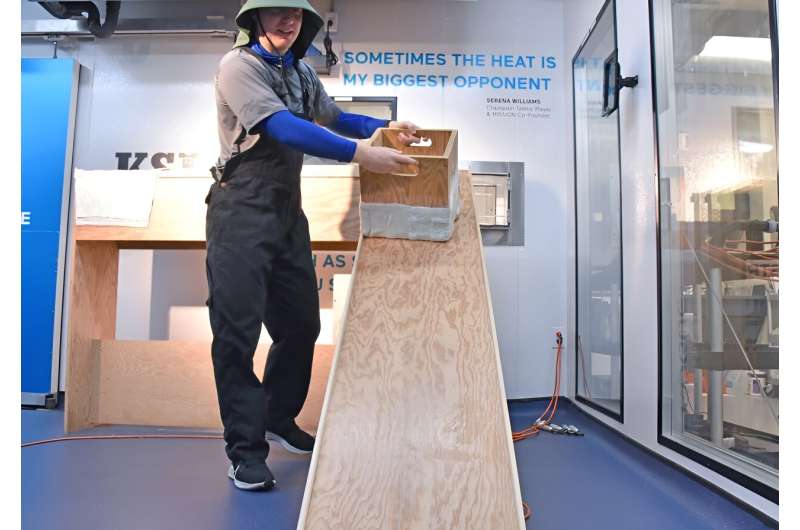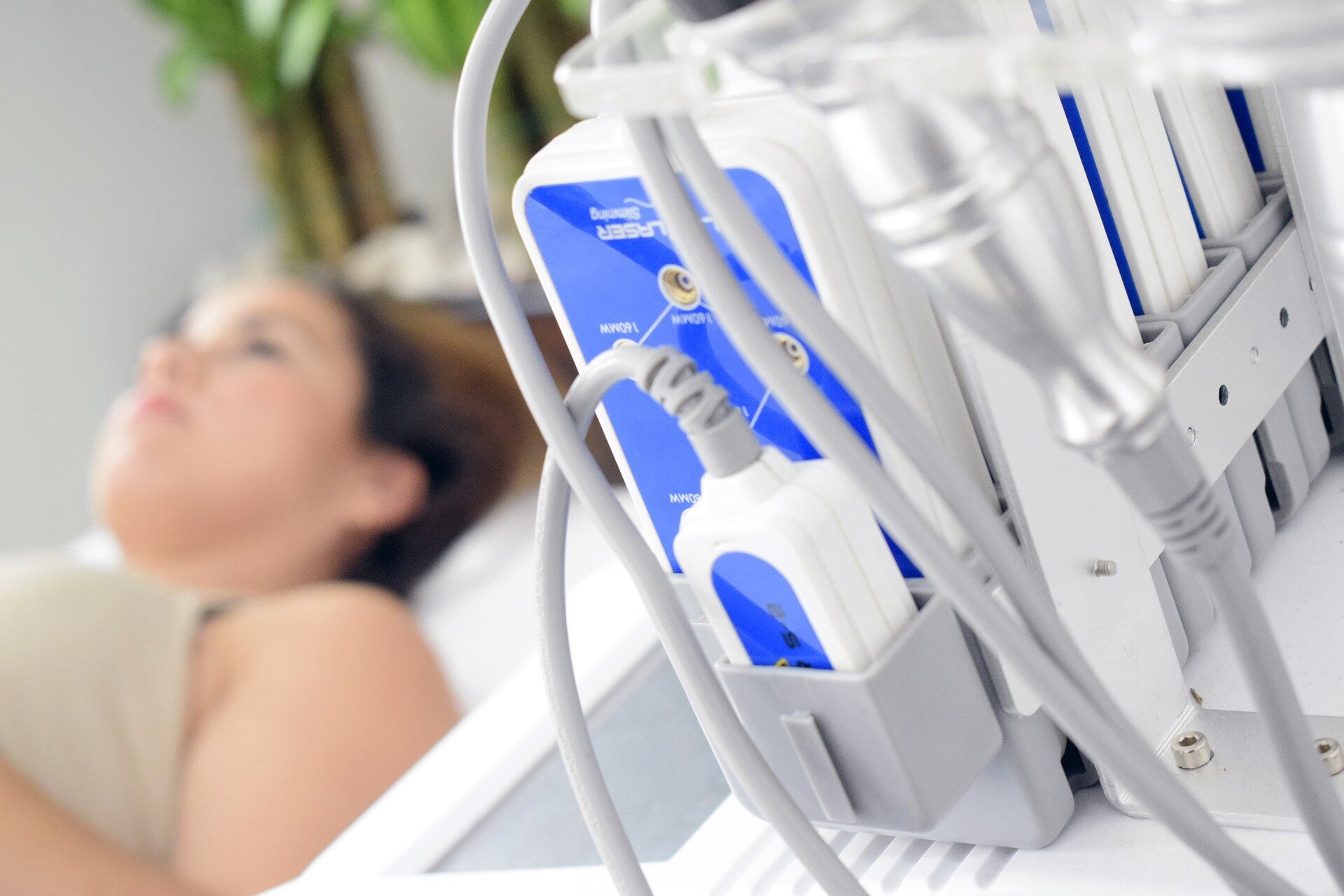
Local weather change is a significant component in laborer security. A brand new examine from UConn’s Korey Stringer Institute reveals how warmth mitigation can assist hold staff protected and productive.
“There’s lots of chatter proper now amongst train scientists, climatologists, and everybody in between. All of us need to perceive how local weather change is affecting staff’ well being, however then additionally their productiveness,” says Gabrielle Brewer, director of occupational security and president of the warmth security and efficiency coalition at KSI.
In a examine printed in Frontiers in Sports activities and Energetic Residing, a gaggle of KSI researchers reported that offering staff with entry to warmth mitigation methods improves their well being and productiveness when working in simulated high-heat circumstances.
Corporations in industries the place staff are recurrently uncovered to excessive warmth, equivalent to factories, development, and agriculture, approached KSI with a query about the best way to hold staff protected within the warmth and enhance their productiveness.
Within the examine, the KSI researchers had a gaggle of lively younger males full bodily duties—strolling on a treadmill and transferring packing containers—in a specialised lab whereas making use of a wide range of warmth mitigation methods. The MISSION Warmth Lab at UConn’s Korey Stringer Institute allowed for this distinctive testing.
On one finish, members acquired the gold-standard degree of warmth mitigation which incorporates limitless entry to water, recurrently altering out ice packs in a cooling vest, working within the shade, and physique cooling with towels. On the opposite, members modeled the “worst case situation” during which they’d restricted entry to water and no different warmth mitigation methods.
The researchers additionally carried out a collection of trials in between these two extremes.
“[We tested] the worst of the worst and the very best of the very best after which every part in between that led as much as greatest working circumstances in a simulation occupational setting,” Brewer says.
All through the trials, the researchers monitored members’ inside physique temperature, which is a key scientific indicator of warmth pressure, pores and skin temperature, and coronary heart price. In addition they requested members to price how scorching they felt, their degree of fatigue, and the way onerous they felt they had been working.
Probably the most vital modifications throughout all trials had been between the worst- and best-case eventualities.
Within the best-case situation, staff had a decrease inside physique temperature and coronary heart price, in addition to improved perceptions of their physique temperature, exertion, and fatigue. They had been additionally in a position to full roughly 14% extra field lifts.
“That is the information we need to share with corporations. If they’ll hold their staff protected from a physiology perspective, possibly they are not getting as scorching, they are not staying as scorching for as lengthy, they usually’re being extra productive at work on prime of that, that is a win for everybody,” Brewer says.
These metrics step by step improved within the intermediate trials because the researchers added extra warmth mitigation methods. However essentially the most dramatic results had been between the 2 ends of the spectrum.
Brewer explains that whereas some outcomes weren’t statistically vital, they’re nonetheless essential for shareholders who worth even minor enhancements in productiveness which may accumulate throughout an entire crew of laborers working a full shift.
“If somebody’s in a position to be a bit bit higher off, that is a win for them, their well being, their security, their efficiency, their productiveness, and that is a win for the corporate by way of output on the finish of the day too,” Brewer says.
The researchers plan to pursue future research that embody each sexes in these circumstances, in addition to learning laborers working of their precise settings.
“The labor power consists of lots of ladies, they usually should be studied too,” Brewer says. “They’re tremendously underrepresented within the analysis.”
Brewer emphasizes that the best-case situation that confirmed the best physiological and productiveness enhancements could not work in each office, however that there are a selection of how to apply warmth mitigation methods.
“There are lots of choices on the market, and our information from this examine reveals that the extra warmth mitigation methods you may mix, the extra useful it may be total,” Brewer says.
Extra data:
Margaret C. Morrissey-Basler et al, The impact of warmth mitigation methods on thermoregulation and productiveness throughout simulated occupational work within the warmth in bodily lively younger males, Frontiers in Sports activities and Energetic Residing (2024). DOI: 10.3389/fspor.2023.1274141
College of Connecticut
Quotation:
Examine reveals warmth mitigation improves employee security and the underside line (2024, March 25)
retrieved 25 March 2024
from
This doc is topic to copyright. Aside from any honest dealing for the aim of personal examine or analysis, no
half could also be reproduced with out the written permission. The content material is supplied for data functions solely.







